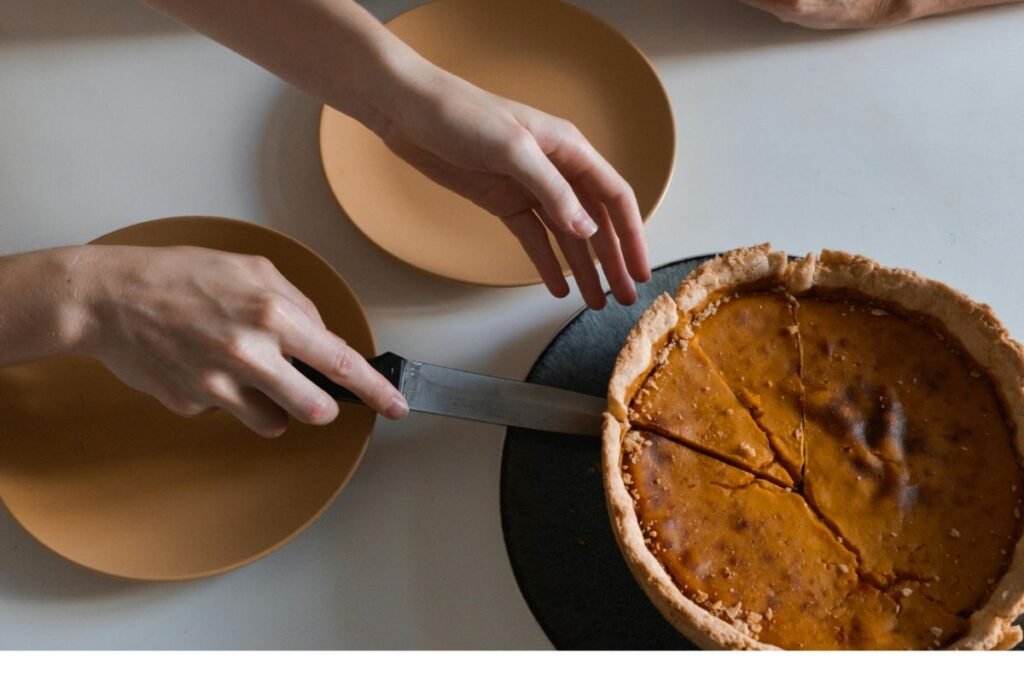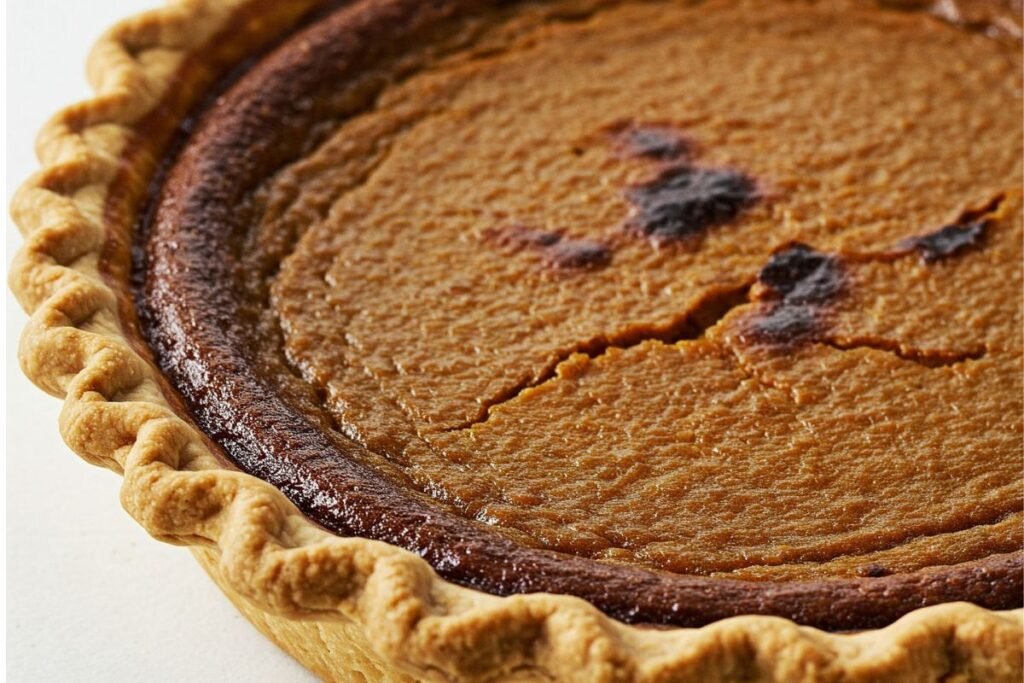Does Overcooked Pumpkin Pie Taste Bad?
Understanding the Impact of Overcooking on Pumpkin Pie’s Flavor and Texture

Yes! Overcooked pumpkin pie does not taste too good, and it turns out dry, rubbery, and stringy-just about the overloading with eggs. Filling comes out detached from crust, and it can burn out around the edges; this is one unpleasant pie. Pumpkin pie should be so smooth, rich, and with spices, while overcooking disrupts the delicate balance in this pie. To avoid this, it is important to monitor the baking time closely and check the internal temperature so that every pie turns out perfectly delicious.
What Happens When You Overcook Pumpkin Pie?
When you overcook pumpkin pie, the delicate balance of its flavor and texture can be disturbed in several ways. Here’s how overcooking impacts your pie:
- Texture Changes
The filling of pumpkin pie is made by mixing pumpkin puree, eggs, sugar, and spices. Overcooking can cause over-setting of the eggs in the filling, resulting in too firm a custard, and sometimes even rubbery. A texture that is supposed to be smooth may become grainy or too dense and therefore not as nice in the mouth. - Flavor Degradation
Overcooking can change flavors, too. Spices that give pumpkin pie its usual warmth, like cinnamon, nutmeg, and ginger, may be dumbed down or even a bit bitter if overcooked. Additionally, the filling of pumpkin may take on a burnt taste or too caramelized, which is off. - Crust Issues
The crust may turn out too crispy. This kind of pie might have a rather overbrown-colored or perhaps charred crust when it had a little extra, unnecessary minutes within the oven that makes them far from delicate with less flakes to them. Crust might also not give off such delicate crispiness, hard to slice and eat.

Why Does Overcooking Happen?
Overcooking is often the result of not monitoring the pie closely or not using the right oven temperature. Here are some common reasons:
- Too High Oven Temperature: If the temperature is too high, the crust bakes too fast, while the inside isn’t baked enough; that may cause burning on the outside while the center is overcooking.
- Incorrect Timing: If it stays in the oven for a long period, the filling continues to set long after it actually reached the perfect consistency.
- Not Using a Thermometer: Well, an ideal thermometer will be used inside the oven, especially when dealing with the cooking of the pie. Fillings should reach a temperature of 175°F to 180°F, equating to 80°C to 82°C. Anything more will lead to overcooking.

How to Prevent Overcooking?
Preventing an overcooked pumpkin pie is simple with a few tips:
- Follow the Recipe Carefully
Make sure you’re using the correct baking temperature and time specified in your recipe. Every oven is different, so it’s important to check the pie a few minutes before the recommended baking time is up. - Use a Thermometer
A kitchen thermometer is your best friend when making pumpkin pie. Make sure not to overcook the filling-check the internal temperature of it. This will make your pie perfect, with no need to guess whether it’s done or not. - Check for Doneness
It should be set for the most part, but still just a little wobbly in the center. Because it is going to continue cooking after it cools, taking it out of the oven just before being fully set is going to achieve that perfect texture.
Is Overcooked Pumpkin Pie Still Edible?
While an overcooked pumpkin pie may not be as delightful as one cooked perfectly, it is still edible. The texture may be less than ideal, and the flavors might be off, but you can still salvage it in some ways:
- Top it Off: Adding a dollop of whipped cream or a scoop of ice cream can help mask some of the texture issues.
- Repurpose It: You can use overcooked pumpkin pie in other recipes, like turning it into a milkshake, pie bars, or blending it into a custard.
- Serve it Warm: Serving the pie warm might make it more palatable, as some textures improve when the pie is heated up.

Taste Differences in Overcooked vs. Undercooked Pumpkin Pie
Overcooked pumpkin pie is usually dry and rubbery, with a very eggy flavor, because the eggs have set too much, and the filling may be grainy or separated from the crust. The spices lose their warmth, and the edges may burn, making the pie unpleasantly flavored.
On the contrary, the pumpkin pie that was underbaked will have its filling mushy and runny; it could be too sweet or under-seasoned. Less developed flavors might be present in it, while it may be missing that very velvety texture that could turn it into a perfect dessert. A proper bake means balance in flavors.
What to do with overcooked pumpkin Pie?
If your pumpkin pie is overcooked, well, there is always a way to rescue it. You still can use the whipped cream topping or ice cream to mask the texture. Get creative; you even can blend it in a milkshake or make pie bars. You may use the pureed filling in any custard recipe or as the filling for other desserts. Use your head and make your best of it!

Conclusion
In short, overcooked pumpkin pie can taste bad due to the changes in texture and flavor that occur when it’s left in the oven too long. To avoid this, be sure to follow your recipe’s timing and temperature guidelines carefully. Using a kitchen thermometer and checking the pie’s doneness can ensure that your pumpkin pie is as delicious as it should be. If you do happen to overcook it, don’t despair—there are ways to salvage the flavor and texture.
Read More:






